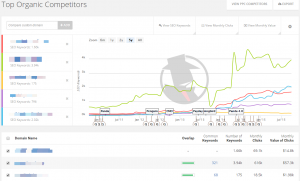Navigating the convergence of martech and ad tech isn’t for the faint-hearted, but contributor Jose Cebrian describes the possibilities now arising.

Every marketer knows how important it is to collect data and use it to inform strategies and analyze performance.
But the collection and parsing of data is only one side of the marketing equation. If the data isn’t being leveraged effectively, the value of accumulating it is negligible.
Marketing technology (martech) and advertising technology (ad tech) are converging from every direction, at a maddening pace. So much so that David Daniels of The Relevancy Group coined the term “MadTech” to capture the right tone.
And despite the constant change and complexity, marketers now have the tools they need to take immediate, impactful action on the data they collect. Better yet, because that action is data-driven, it is by default aligned with customer-centricity.
The conceptual barriers between martech and ad tech are blurring. Ad tech is no longer strictly a new customer acquisition tool. Established martech systems like CRM platforms and email service providers are no longer considered passive information repositories, but engines for actionable outreach.
This consolidation is making it possible for marketers to achieve not only greater insights into their customers and potential customers, but also to move more fluidly from insight to engagement to retention.
The tools of the trade

Customer relationship management (CRM) programs have long been the definitive martech platforms, whereas demand-side platforms (DSPs) and ad networks are synonymous with the ad tech movement. CRM platforms have changed radically in recent years, evolving from software with relatively narrow parameters to target segments and schedule campaigns to systems that can connect audiences across channels with integrated, personalized communications.
Newer martech systems like customer data platforms (CDPs) go a step further, facilitating automation across all customer touch points and marketing channels. And while DSPs and ad networks function much as they always have on the ad tech side, the rise of data management platforms (DMPs) has allowed marketers to connect these digital advertising inventory management tools with campaign and audience data to optimize future media buys and messaging.
Clearly, the increasing sophistication of martech and ad tech systems expands marketers’ capabilities, but the convergence of the two disciplines is fueled only in part by technological progress. Perhaps more important than the power of the tools themselves is the more widespread agreement on what they should be used to achieve — namely, people-based marketing.
The strategy remains the same: People first

Martech and ad tech operate through different vectors, but ultimately, they have the same goal: to reach customers and potential customers as individuals, incorporating their preferences and past behaviors to put the right offer or message in front of them at the right time.
This customer-centric strategy is at the heart of any successful marketing effort. And while it is powered by the effective use of customer data, it’s ultimately the result of an organization-wide commitment to people-based marketing.
The convergence of martech and ad tech greatly simplifies the execution of a people-based strategy. By combining data collection and current customer understanding (insights) with the ability to immediately apply that data to tangible actions like media and ad buying, marketers can achieve a level of orchestration and personalization that drives positive business outcomes.
And importantly, it enables better and more accurate real-time analytics, giving marketers the means by which to assess their campaigns and other tactics and change course if necessary.
The importance of partners

Of course, not every marketer has the intra-organizational means by which to take full advantage of the confluence of martech and ad tech. The largest B-to-C companies — Amazon, for example — have the luxury of developing internal “converged” systems that deliver continuous customer engagement, retargeting, media purchasing, data analysis and so on.
For other companies, however, identifying the technology partner that can deliver a converged solution is paramount. And while those vendors exist, the process is ongoing; according to Forrester, only the first phase of martech and ad tech convergence is underway, with four additional phases of evolution predicted.
The current (first) phase is the effective utilization of data. Phase two involves split in marketing orchestration, phase three will usher in an explosion of niche providers, phase four will be all about buy-side consolidation, and phase five will see parallel platforms.
In the meantime, marketers will need to identify the tools that best serve their purposes and seek out the technology providers that can provide them. For some, this may be a CDP that also integrates with an ad exchange or a DSP . For others, it may be a DMP that is interoperable with an existing CRM or loyalty program management tool.
Either way, tools like these are fast becoming indispensable to marketers. The convergence of martech and ad tech is here, and those marketers that identify the right tools and the right people-based marketing strategy will be able to leverage this convergence effectively and contribute directly to their organizations’ bottom-line goals.
Opinions expressed in this article are those of the guest author and not necessarily Marketing Land. Staff authors are listed here.
Marketing Land – Internet Marketing News, Strategies & Tips
(52)








